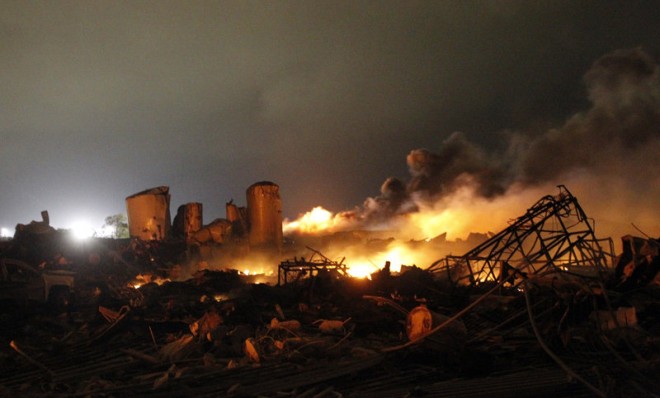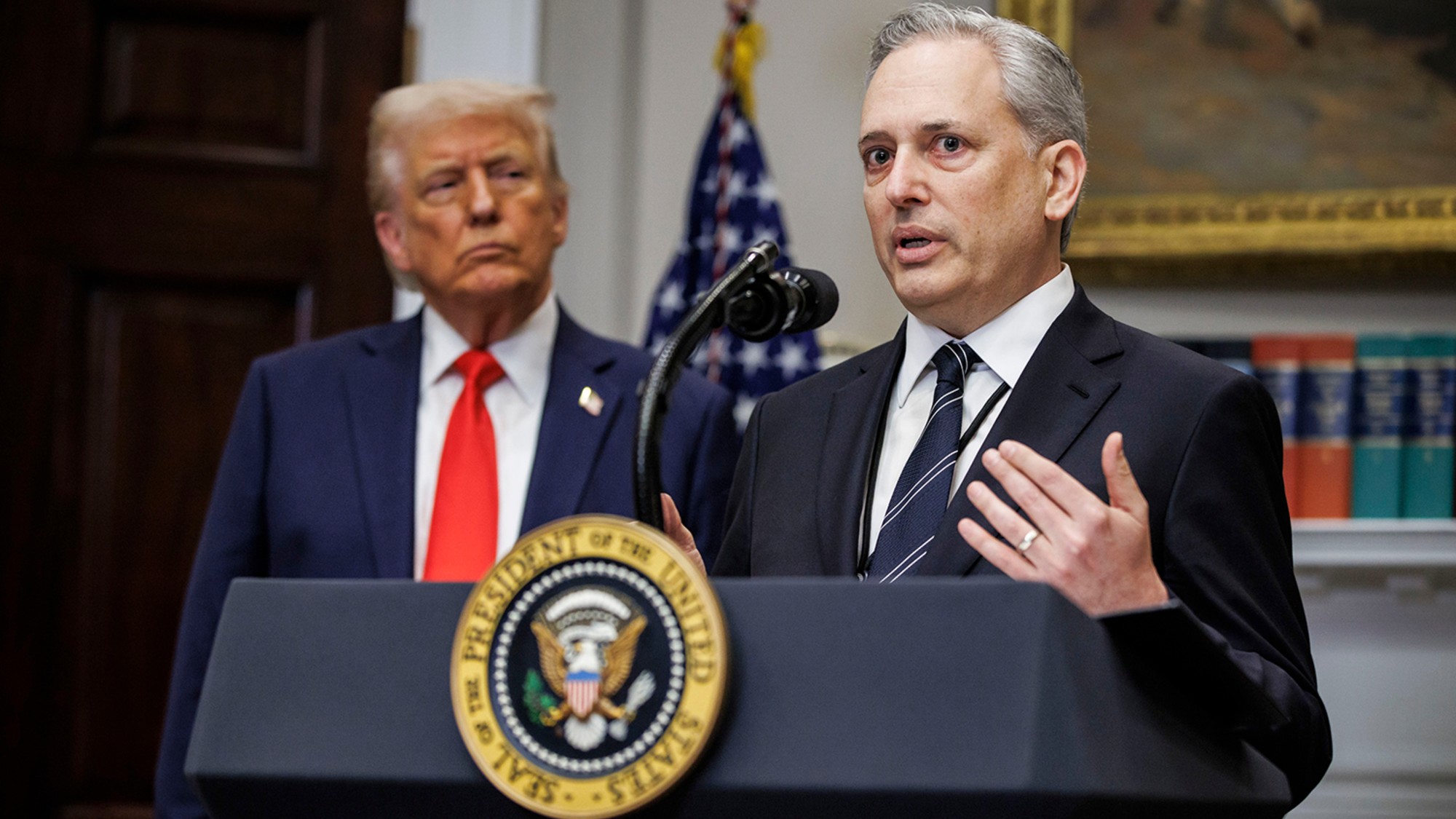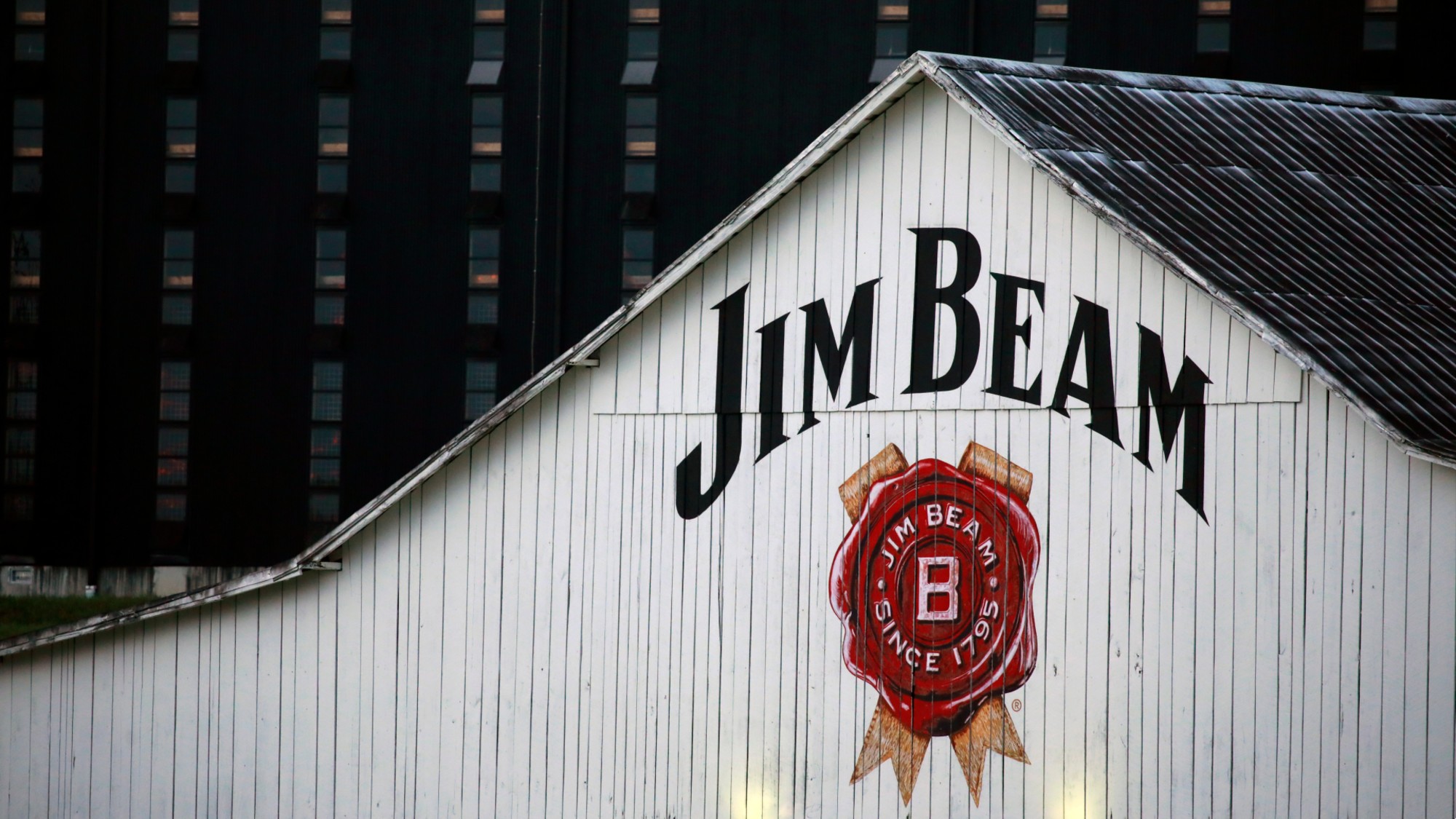What we know about the Waco-area fertilizer plant explosion
A sizable part of the town of West, Texas, was destroyed late Wednesday in a massive explosion


Before Wednesday evening, the small town of West, Texas — a dozen miles north of Waco and just south of Willie Nelson's hometown, Abbott — was known mostly for its Czech pastries. Then, just before 8 p.m., the West Fertilizer plant exploded, sending a mushroom cloud into the sky, breaking windows and doors up to a mile away, and leveling buildings in a five-block radius. More than 160 people were injured, and there were an unknown number of casualties. (Watch an amateur video of the explosion here.)
Here's what we know so far about the massive explosion in West, population about 2,800:
How did the explosion happen?
The Week
Escape your echo chamber. Get the facts behind the news, plus analysis from multiple perspectives.

Sign up for The Week's Free Newsletters
From our morning news briefing to a weekly Good News Newsletter, get the best of The Week delivered directly to your inbox.
From our morning news briefing to a weekly Good News Newsletter, get the best of The Week delivered directly to your inbox.
A fire was reported at the West Fertilizer plant at about 7:30 p.m., local time, and firefighters responded. "The fire spread and hit some of these tanks that contain chemicals to treat the fertilizer," Rep. Bill Flores (R-Texas) tells The New York Times, "and there was an explosion which caused wide damage."
The federal Bureau of Alcohol, Tobacco, Firearms and Explosives (ATF) is investigating the explosion as a "crime scene," according to Waco Police Department Sgt. W. Patrick Swanton, but only out of an abundance of caution. There's no indication of criminal activity, he said, but it's easier to switch from investigating a crime to an industrial accident than vice versa.
How many people were killed?
Swanton said early Thursday that the death toll so far is between five and 15, almost certainly including some firefighters and other first responders who went to put out the fire and evacuate workers. More fatalities are expected when the houses and other buildings around the plant are searched. An initial estimate, since disavowed by police, was for 60 to 70 casualties.
A free daily email with the biggest news stories of the day – and the best features from TheWeek.com
How big was the explosion?
The U.S. Geological Survey says that the explosion registered as a magnitude 2.1 earthquake, "but seismologists say their sensors can only record the ground motion, and that people who felt the shockwave above ground actually experienced a much larger event," says Amy Powell at ABC News. It was felt as far away as Amarillo, Texas, 430 miles away.
At at press conference, state trooper D.L. Wilson compared the scene at the plant to a war zone. "I can tell you I was there, I walked through the blast area, I searched some houses earlier tonight. It was massive, just like Iraq, just like the Murrah building in Oklahoma City."
Why was the explosion so massive?
"The plant uses ammonium nitrate in fertilizer production, the same chemical used in 1995's Oklahoma City Bombing," says Siobhan Morris at Newstalk 1010. Timothy McVeigh used a truck packed with about two tons of ammonium nitrate to set off his deadly blast, killing 168 people and wounding hundreds more. "The West Fertilizer plant may have had as much as 100 tons of the chemical on hand."
Has anything like this ever happened before?
Yes. The biggest recent ammonium-nitrate accident was a 2001 explosion in Toulouse, France, that killed 31 people and injured more than 2,000 others. That blast was in a hangar holding 300 tons of ammonium nitrate; in 2006, the blast was blamed on negligence.
A much worse explosion happened in Texas, nearly 66 years ago to the day. On April 16, 1947, a fire aboard the SS Grandcamp, docked at Texas City, on the Gulf Coast, detonated 2,300 tons of ammonium nitrate on the ship, a neighboring vessel, and a nearby warehouse. At least 581 people were killed, including all but one of Texas City's firefighters.
Peter has worked as a news and culture writer and editor at The Week since the site's launch in 2008. He covers politics, world affairs, religion and cultural currents. His journalism career began as a copy editor at a financial newswire and has included editorial positions at The New York Times Magazine, Facts on File, and Oregon State University.
-
 Trump vs. states: Who gets to regulate AI?
Trump vs. states: Who gets to regulate AI?Feature Trump launched a task force to challenge state laws on artificial intelligence, but regulation of the technology is under unclear jurisdiction
-
 Decking the halls
Decking the hallsFeature Americans’ love of holiday decorations has turned Christmas from a humble affair to a sparkly spectacle.
-
 Whiskey tariffs cause major problems for American distillers
Whiskey tariffs cause major problems for American distillersIn the Spotlight Jim Beam is the latest brand to feel the pain
